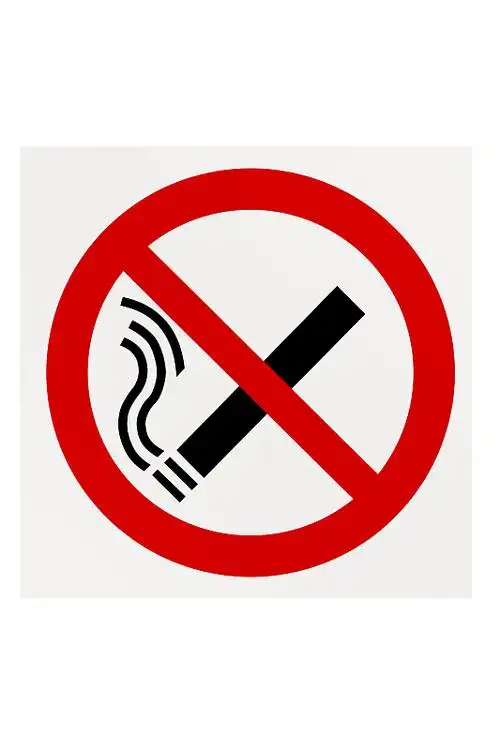The Deadly Synergy: How Tobacco Use Amplifies Mortality in Ventilator-Associated Pneumonia
When a patient is admitted to an intensive care unit and requires the life-support of a mechanical ventilator, it represents a critical battle for survival. The machine breathes for them, offering a precious chance for their body to recover. However, this vital intervention comes with a significant and well-known risk: Ventilator-Associated Pneumonia (VAP). VAP is a serious lung infection that develops in a person who is on a ventilator, and it is a major cause of illness and death in ICUs worldwide. While healthcare professionals wage a constant war against this complication using advanced protocols and powerful antibiotics, there is a pre-existing condition that dramatically tilts the scales against the patient: a history of tobacco use.
The connection between smoking and lung disease is common knowledge, but the specific, aggravated relationship between tobacco exposure and the outcomes of VAP is a critical public health and clinical issue that deserves a sharper focus. This article delves into the compelling evidence showing how tobacco use not only increases the risk of developing VAP but, more importantly, significantly increases the mortality rate for those who contract it. We will explore the biological mechanisms at play and what this means for patients and their families.
Understanding the Enemy: What is Ventilator-Associated Pneumonia?

First, let's understand the primary adversary. A ventilator is a tube inserted into a patient's airway, connected to a machine that pushes air into the lungs. While lifesaving, this endotracheal tube bypasses the body's natural defenses in the upper airways—like the cough reflex and the mucus-clearing function of tiny hair-like structures called cilia. This creates an open gateway for bacteria to travel down into the sterile environment of the lungs. If these microbes establish an infection, it results in VAP. Symptoms can include fever, purulent lung secretions, and worsening oxygen levels. Diagnosing and treating VAP promptly is a cornerstone of critical care, but success is far from guaranteed.
The Smoker's Lung: A Weakened Fortress Before the Battle Even Begins
To comprehend why a smoker faces a disproportionately higher risk of dying from VAP, we must look at the state of their lungs before they ever enter the hospital. Chronic exposure to tobacco smoke causes a relentless assault on the respiratory system, creating what is often termed a "pre-injured" lung. This pre-existing damage manifests in several key ways:
- Impaired Ciliary Clearance: The airways are lined with cilia that rhythmically beat to move mucus and trapped pathogens up and out of the lungs. Tobacco smoke paralyzes and destroys these cilia. This means that in a smoker, bacteria that enter the lungs are far more likely to stay there and multiply, a phenomenon known as impaired bacterial clearance in smokers.
- Mucus Hypersecretion: Smokers often develop chronic bronchitis, characterized by an overproduction of thick, sticky mucus. This mucus not only provides a rich food source for bacteria but also physically traps them in the lungs, making it harder for immune cells to reach and destroy them.
- Altered Immune Function (Immunomodulation): This is perhaps the most insidious effect. Tobacco smoke doesn't just cause physical damage; it actively confuses and suppresses the immune system. Key immune cells like alveolar macrophages and neutrophils, which are the body's first responders to infection, become dysfunctional. Their ability to recognize, engulf, and kill bacteria is severely diminished. This state of smoking-induced immunosuppression leaves the body dangerously unprepared to fight off a severe infection like VAP.
When a patient with this pre-compromised respiratory system is placed on a ventilator, they are already at a severe disadvantage. The fortress walls are already crumbling.
The Perfect Storm: How Tobacco and VAP Interact to Increase Mortality
When VAP develops in a patient with a history of tobacco use, the interaction creates a "perfect storm" that drives up the fatality rate. The reasons are multifaceted and deeply interconnected.
-
More Virulent Infections: Research has shown that bacteria tend to behave more aggressively in the lungs of smokers. The unique environment of the smoker's lung—rich in toxins and debris from tobacco smoke—can actually trigger bacteria to express more virulent factors. This means the bacteria are better at adhering to lung tissue, invading deeper, and resisting the body's immune attacks. The impact of smoking on VAP outcomes is therefore not just about a weakened host, but also a strengthened pathogen.
-
The Burden of Underlying Lung Disease: Many long-term smokers have developed Chronic Obstructive Pulmonary Disease (COPD), a condition that permanently damages the air sacs and airways. A patient with COPD who develops VAP is essentially facing a double lung insult. Their respiratory reserve is already minimal, and a severe infection like VAP can push them into irreversible respiratory failure. The link between smoking history and fatal pneumonia is powerfully mediated by the presence of COPD.
-
Antibiotic Resistance and Treatment Challenges: The chronic inflammation and recurrent infections common in smokers can lead to repeated courses of antibiotics. This selective pressure can foster the growth of drug-resistant bacteria. Consequently, when a smoker develops VAP, there is a higher probability that the causative organism is a drug-resistant pneumonia in ICU patients, such as MRSA or Pseudomonas aeruginosa. These "superbugs" are notoriously difficult to treat, narrowing the options for effective antibiotic therapy and leading to treatment failure. This is a critical component of managing ventilator-associated pneumonia in smokers.
-
Systemic Inflammatory Overload: A severe infection triggers a massive inflammatory response throughout the body, a so-called "cytokine storm." In a smoker, the lungs are already in a chronic state of low-grade inflammation. The addition of VAP can overwhelm the system, leading to excessive inflammation that damages not only the lungs but also distant organs like the kidneys and heart. This multi-organ failure is a common cause of death in the ICU, and smokers are more susceptible to this catastrophic cascade.
Clinical Evidence and the Harsh Numbers
The theoretical mechanisms are backed by sobering statistics. Numerous clinical studies have consistently demonstrated that a history of smoking is an independent predictor of higher mortality in patients with hospital-acquired pneumonia, including VAP. These studies adjust for other factors like age, severity of illness, and other comorbidities, and the association between tobacco use and death remains strong and significant. The mortality risk from VAP in smokers isn't just slightly higher; some studies suggest it can be double or more compared to non-smokers with the same infection. This makes smoking history one of the most critical pieces of information for an intensivist when prognosticating and planning treatment.
Implications for Prevention and Treatment: A Call for Action
Understanding this deadly synergy has profound implications, stretching from public health policy to the bedside in the ICU.
- Smoking Cessation is Non-Negotiable: The most powerful intervention remains prevention. This evidence reinforces that smoking cessation is not just about preventing lung cancer or COPD decades from now; it is about building a more resilient body that can survive a critical illness today. Every effort must be made to support individuals in quitting smoking.
- Informed ICU Care: For clinicians, a patient's smoking status should trigger a higher index of suspicion for VAP and for more resistant organisms. It may influence the choice of empirical antibiotics, pushing towards broader-spectrum coverage until the specific bacteria is identified. It also calls for even more rigorous adherence to VAP prevention strategies for at-risk patients, such as elevating the head of the bed, regular oral care, and minimizing sedation.
- Patient and Family Awareness: For patients and their families, this knowledge is empowering. It provides a stark, tangible reason to quit smoking and underscores the importance of being transparent with healthcare providers about smoking history. It can also help families understand the complexities and heightened risks if their loved one becomes critically ill.
In conclusion, the relationship between tobacco use and Ventilator-Associated Pneumonia is a classic example of a negative feedback loop where a pre-existing vulnerability catastrophically amplifies a subsequent insult. Tobacco smoke prepares the lung for failure by dismantling its defenses and crippling its immune army. When the invasion of VAP occurs, the battle is often lost before it truly begins, leading to tragically higher mortality rates. Acknowledging this deadly synergy is the first step toward mitigating its impact, through relentless prevention efforts and highly vigilant, personalized care for those who need it most. The goal is clear: to ensure that the life-saving technology of the ventilator is not undone by the avoidable damage caused by tobacco.













